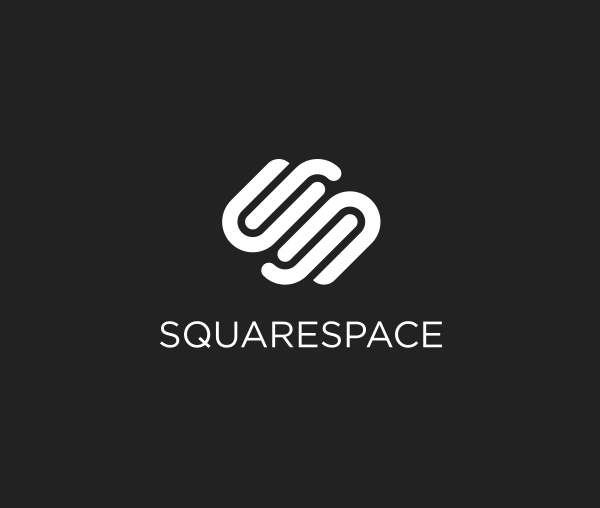Guest post from fantastic photographer and friend Steve Scurich
Shooting Real Estate with 24mm Tilt Shift, Canon 11-24 f/4 and Canon 16-35 F/4
 So, I’ve recently rented a couple of lenses for some real estate photography jobs and wanted to share some of my thoughts… To begin with, I am by no means an expert in equipment, settings or technical knowledge on this subject matter. I am simply a guy who loves photography and makes a living photographing residential and commercial real estate, portraits and corporate events in the greater Santa Barbara, CA area. Since that’s now out of the way, here are a few thoughts and example images.
So, I’ve recently rented a couple of lenses for some real estate photography jobs and wanted to share some of my thoughts… To begin with, I am by no means an expert in equipment, settings or technical knowledge on this subject matter. I am simply a guy who loves photography and makes a living photographing residential and commercial real estate, portraits and corporate events in the greater Santa Barbara, CA area. Since that’s now out of the way, here are a few thoughts and example images.
"...as a Real Estate Photographer, I reject a lot of client's ideas about “removing” items from a scene, unless they are not permanent..."
For the past couple years, I’ve been using my Canon 24mm TS/E f3.5L lens on almost all my real estate photography assignments. In fact, I’ve become so comfortable and happy with it, that I even use it on most landscape shoots when on a tripod. It has awesome optics and I love how easy it is to compose my shots without much tripod adjustment. I use the shift function all the time, and very minor tilt adjustments to simply straighten lines without losing too much focus above or below. Also, it’s a fun lens to create the “miniature effect”, especially in large architectural spaces or urban landscapes….not for work, just play. My work flow with this lens is usually like this: Choose an angle and set up my tripod fully extended (I use an Induro AT114 with RRS BH50 ball head), level the camera using the ball head bubble level, swivel camera to desired composition (this usually involves physically moving forward/backward slightly since the lens is a prime), shift TS/E up or down to frame composition, select focal spot and 10x zoom on Live View to manually focus, zoom out, select meter spot and take 5-7 exposures, usually -2, -1, 0, +1, +2. Post production is usually a merge in LR with minor PS edits if needed. It should be noted that as a Real Estate Photographer, I reject a lot of client's ideas about “removing” items from a scene, unless they are not permanent, to avoid any misrepresentation when marketing the property. Selecting a good angle and processing a quality photograph is much more effective anyway.Having said all that, I can practically do this workflow in my sleep. It’s what I know and I haven’t felt too pinched by a 24mm lens in most common area rooms. Now that I live and work in Santa Barbara, CA however, a place where a 3bd/2ba 1300 sq ft home can easily sell for $1-10 Million depending on location; I have found a need to use a super wide angle lens, especially in smaller bed/bathrooms. I had been reading some great reviews on Canon’s new 11-24mm f/4L lens, so I rented it for a couple jobs. First thing I’ll say is that it is HUGE, and heavy. My gosh, what a beast-of-a-lens! That out of the way, it really is top quality and amazing. Being a prime user primarily (see what I did there?), I constantly forgot to zoom in/out when using the 11-24mm….it was usually set around 11-13mm and I conducted business as usual (with the exception of TS/E). If I had it permanently in my bag, the forgetting to zoom certainly wouldn’t have been an issue, but I’m not sure I truly utilized all it was capable of. What I did notice though, is that I only selected about 50% of the angles I shot on the 11-24mm vs. my 24mm TS/E. It has world class optics sure, and is totally impressive at the edges considering how wide it is, but it was extremely sensitive to angle distortion if my camera was not perfectly level on the tripod. If too much ceiling was showing and I needed to “shift” down, the tripod adjustments started. If too much floor showed and not enough ceiling, up went the center column, and so on. Angling the lens up/down was just not a good option unless I wanted to spend hours in Manual Profile Lens Corrections - auto corrections are just okay for me. In other words, it’s a finicky lens and needs to be treated with respect, patience and care (especially the very bulbous front glass). Which brings me to another disappointment, lens filters. I’m not sure what options are out there now for the 11-24mm, but I know my 82mm ND 9-stop filter certainly won’t work. The lens hood is fixed in place and the lens cap covers both the lens and hood ends. Did I mention it’s a beast-of-a-lens…? In small spaces, with my tripod lowered to a height I found to be useful in most rooms, this lens was a dream. Capturing a vast view from a patio, or framing up as much land around a property as possible, the 11-24mm is perfect. Beyond that, I much prefer my 24mm TS/E.
My job is to entice a feeling of being able to visualize yourself living in a room, not to take your kids to the bending circus mirrors at a local carnival.
Another thing worth mentioning is that when I did use the 11-24mm in smaller spaces, it was a bit challenging framing up 3 walls vs. 2 as I usually do. This could very well be due to my being a novice with super wide angle lenses, but I was just not happy with the distortion of angles on most shots. All ceilings became “vaulted” and floors became sloped. The images kind of screamed out, “Hey, the photographer obviously used a wide angle lens to try and make the room look bigger than it is!” My job is to entice a feeling of being able to visualize yourself living in a room, not to take your kids to the bending circus mirrors at a local carnival. Many of my 11mm shots were cropped down to 2 walls, probably about 16-20mm….and this brings me to my conclusion.If I had tons of money and could afford an array of pro lenses in my bag, I’d definitely buy the 11-24mm, no question. My write up may seem a bit negative, but it’s an amazing lens and with more time and practice, I know I’d fall in love with it. It is temperamental and requires a new way of composition framing, for me anyway, that can be really good down the road, but a headache when a client is moving from room-to-room, staying out of frame and waiting for me to finish photographing his/her property. I am, however, not made of money so I need to consider my alternatives that can help in the small spaces or vast landscapes, and not cost more than an international photography safari with McKay Photography Academy - besides, I’d rather put my hard earned money there anyway… So what do I do? For me, it’s simple. Canon 16-35mm f/4L IS. I’ve played around with this lens recently and for a 1/3 of the cost of the 11-24mm, my wallet is wide open Canon. Sure, the 11-24mm can possibly differentiate yourself from the competition as a professional real estate photographer, but let’s face it….if you’re splitting those hairs, you’re probably able to afford it. The optics of the 16-35mm are great, it’s plenty wide enough for what I like to accomplish, it’s light and easy to carry, and my 77mm (or 82mm with step-down ring) filters fit right out the gates. I’m still in a love affair with my 24mm TS/E, but for wider angle shots, I’m using the 16-35mm f/4L IS.Oh, I should probably mention that I’ve spent good time with Canon’s 17mm TS/E f/4L too, but with some of the problems I had with the 11-24mm (bulbous lens front, no filters, expense, etc.) while also being very disappointed in the clarity. It’s getting a little long in the tooth, similar to the 17-40mm or 16-35 f/2.8 lenses. The combination of my Canon 24mm TS/E f/3.5L and 16-35mm f/4L IS is just what the real estate photography doctor ordered.
Gear Mentioned























 Learn more about the Tokina 11-16 vs the Canon 10-18 and Canon 10-22
Learn more about the Tokina 11-16 vs the Canon 10-18 and Canon 10-22 Learn more about the more expensive full frame wide angle lens options- Canon 16-35, Tamron 15-30
Learn more about the more expensive full frame wide angle lens options- Canon 16-35, Tamron 15-30
 Samyang (Also branded Rokinon, Vivitar, Bower etc) are a brand that we really like, they've been delivering optically fantastic lenses at incredible prices with one large tradeoff - they've always been manual focus.The current 14mm is our pick for "Best Budget Lens for Stars" see our review
Samyang (Also branded Rokinon, Vivitar, Bower etc) are a brand that we really like, they've been delivering optically fantastic lenses at incredible prices with one large tradeoff - they've always been manual focus.The current 14mm is our pick for "Best Budget Lens for Stars" see our review 
 Sigma's excellent ART series lenses come in a 24mm f/1.4, 35mm f/1.4 and the 50mm f/1.4 focal lengths, and now, if you felt like 24 wasn't quite wide enough, you are in luck- Sigma has just released the 20mm f/1.4. This is the first 20mm f/1.4 lens designed for full-frame cameras. This wider focal length is well-suited to landscapes, astrophotography, event shooting, and low-light work.What I can't figure out though - The difference between 20mm and 24mm focal length is slight, very slight. Was there such demand for a wider version of the 24mm that Sigma felt compelled to make this? I am sure it will be a sharp lens as ALL the other Sigma Art lenses are. We own the 35 and 50 and love them. I review the 24mm f/1.4 and found it to be excellent. I am just surprised that the next ART lens Sigma released is so close to an existing lens. What I am really saying here is "I WANT THE SIGMA ART 85MM!!!" and I am not excited about other Sigma lenses until I get what I want! Maybe a 135mm f2, that might get me excited. How about you - what Sigma ART series lens would you like to see next?The 20mm f/1.4 DG HSM Art lens will be available in
Sigma's excellent ART series lenses come in a 24mm f/1.4, 35mm f/1.4 and the 50mm f/1.4 focal lengths, and now, if you felt like 24 wasn't quite wide enough, you are in luck- Sigma has just released the 20mm f/1.4. This is the first 20mm f/1.4 lens designed for full-frame cameras. This wider focal length is well-suited to landscapes, astrophotography, event shooting, and low-light work.What I can't figure out though - The difference between 20mm and 24mm focal length is slight, very slight. Was there such demand for a wider version of the 24mm that Sigma felt compelled to make this? I am sure it will be a sharp lens as ALL the other Sigma Art lenses are. We own the 35 and 50 and love them. I review the 24mm f/1.4 and found it to be excellent. I am just surprised that the next ART lens Sigma released is so close to an existing lens. What I am really saying here is "I WANT THE SIGMA ART 85MM!!!" and I am not excited about other Sigma lenses until I get what I want! Maybe a 135mm f2, that might get me excited. How about you - what Sigma ART series lens would you like to see next?The 20mm f/1.4 DG HSM Art lens will be available in 


